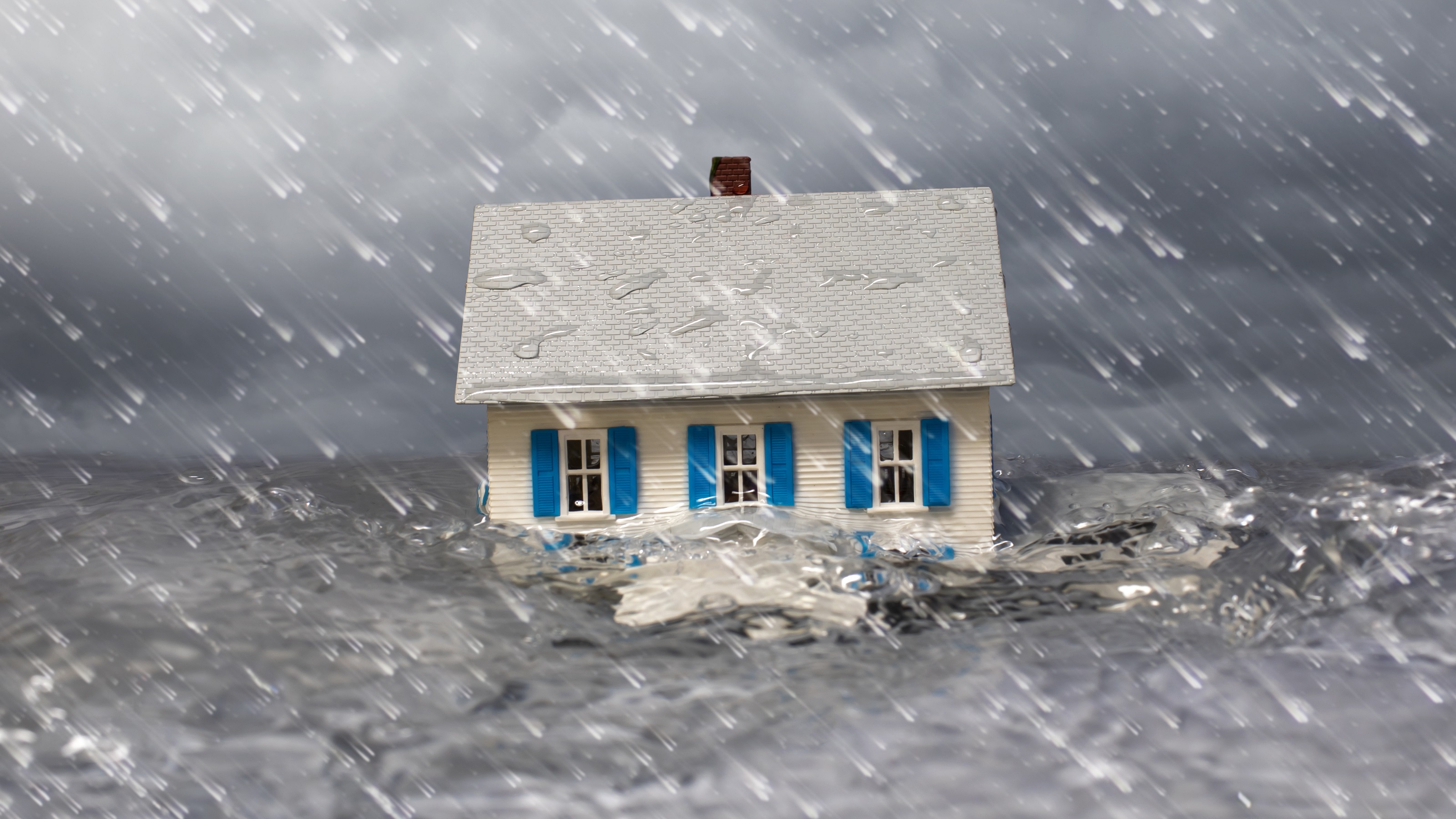Rebuilding Emergency Savings in 2021: Take a Realistic Approach
Saving for a rainy day can be a tall order, especially if you have recently experienced a financial setback. Taking even small steps can help you work toward the larger goal of building up your emergency savings.


You may have heard that you should have three to six months’ worth of essential living expenses saved in case of emergency. It’s sound guidance — but it might be the last thing you want to hear after a year marked by emergencies.
For many of us, 2020 tested our health, safety, bravery and basic financial stability more than any other period in recent memory. If you didn’t already have money saved for emergencies, last year likely wasn’t the time to start stashing it away. And if you did, it may have been a prime opportunity to dip into your reserve.
To that end, a survey from Bankrate found that 35% of Americans have less in their emergency fund now than before the pandemic started, while just 13% have more. Only a quarter have enough saved to cover six months’ worth of expenses, and one-fifth (21%) have no emergency savings at all. Despite these sobering stats, more than half (54%) of respondents said they feel at least somewhat confident in the amount they have socked away. These findings show there’s a disconnect between what people think they need to have saved versus what best practices tell us we need to have saved.

Sign up for Kiplinger’s Free E-Newsletters
Profit and prosper with the best of expert advice on investing, taxes, retirement, personal finance and more - straight to your e-mail.
Profit and prosper with the best of expert advice - straight to your e-mail.
To be sure, it can be tough to anticipate how much money we’ll need to cover an emergency, whether it’s unforeseen medical expenses, helping loved ones in need, or replacing income after prolonged unemployment. These scenarios were all too common in 2020 (and continue to be), and many Americans have found themselves coming up short.
But with the benefit of hindsight, many of us may be looking to prepare for the next time we need extra funds. Starting wherever you are today and taking small, practical steps can help you develop sound and effective saving habits. To help you get started, I’ve addressed some of the most common questions about emergency savings below.
How much do I need to have saved?
As noted above, typical guidance suggests you should have three to six months’ of basic living expenses in your emergency fund. Granted, that’s a pretty wide range — so what should you aim for? Everyone’s circumstances are different, but if you have children or ongoing medical expenses, it can be wise to plan for the higher threshold or more.
Not to mention, the events of 2020 showed us that certain industries are particularly hard hit by economic crises — for indeterminate periods of time. If you’re in a job that’s vulnerable to market fluctuations, you may need an even higher target.
For most people, essential living expenses include housing, food, utilities, transportation and health care. Depending on your family, they might also include child care or eldercare costs, or education expenses. If you have debts, they might also include minimum monthly payments to your lenders.
To determine your emergency savings target, take an average of how much you spend on all of your essentials in a given month and multiply it by six (or nine or 12, depending on the number of months you want to prepare for). Don’t just estimate: review your bank and credit card statements to get an accurate picture of your spending. The totals may surprise you. Of course, a loss of income isn’t the only type of financial emergency, so you may want to build in a cushion for home repairs, unforeseen medical events or the sudden need to travel or relocate.
Where do I get the money from?
Meeting your current expenses can be hard enough without the additional pressure of saving for future unknowns. But understand that funding an emergency reserve doesn’t happen overnight; you can set aside smaller amounts over time until you arrive at your target. There are a number of strategies you can apply as you source this money.
First, you can factor saving for this purpose into your monthly budget. This may require pulling back in certain non-essential categories until you’ve met your goal, but remember that these adjustments can be incremental and temporary. For example, with many of us spending more time at home, money previously spent on dining, entertainment, travel and commuting might be steered toward emergency savings instead.
Next, if you’re working, you can dedicate part of your bonus or tax refund to your emergency reserve. While it can be tempting to treat those dollars as “fun money” or use them on short-term expenses, your future self may thank you for allocating some of them to your rainy-day fund.
Another possibility is starting a side business. If your friends are always saying, “You should charge for that!” when commenting on your hobbies and skills, give it some serious consideration. There are many online platforms that could help you earn money for your time and wares.
Lastly, if you have money invested, take a look at your total financial picture to ensure you’ve got an appropriate ratio of liquid cash on hand for emergencies. A financial professional can be a great resource for providing tailored guidance on asset allocation.
You can also mix and match these strategies to make the task of saving more manageable and potentially meet your goal sooner.
Where do I keep it?
Put your rainy-day fund in a liquid account — for example, a high-yield savings account — that can be accessed quickly if an emergency strikes. Importantly, keep this money in its own account, separate from those you use to pay bills and make purchases day to day. This way, you’ll have an easier time preserving it for when you really need it.
What if I need money fast but don’t have enough in my emergency fund?
If you find yourself in the midst of an emergency and haven’t built up sufficient savings, the guidance above may feel like too little, too late. Fortunately, there are short-term sources of funding and relief available, from temporary loan forbearance and debt relief, to lines of credit and new credit cards with zero-interest promotional periods, to employer assistance and unemployment.
The bottom line
Life is unpredictable — but just because you can’t predict the future, it doesn’t mean you can’t plan for the possibility of financial emergencies.
It’s easy to fall into the trap of “status quo bias,” assuming whatever you have stashed away now is sufficient for the future. However, taking a moment to evaluate your current level of savings versus how much you actually need can motivate you to take action and better prepare your finances for future emergencies.
This article has been prepared for informational purposes only. The information in it has been obtained from sources outside of Morgan Stanley. Morgan Stanley makes no guarantees as to the accuracy or completeness of the information from sources outside of Morgan Stanley. It does not provide individually tailored investment advice and has been prepared without regard to the individual financial circumstances and objectives of persons who receive it. The strategies and/or investments discussed in this article may not be appropriate for all investors. Morgan Stanley recommends that investors independently evaluate particular investments and strategies, and encourages investors to seek the advice of a financial adviser. The appropriateness of a particular investment or strategy will depend on an investor’s individual circumstances and objectives.
Asset Allocation does not assure a profit or protect against loss in declining financial markets.
Morgan Stanley Smith Barney LLC (“Morgan Stanley”), its affiliates and Morgan Stanley Financial Advisors or Private Wealth Advisors do not provide tax or legal advice. Individuals should consult their tax adviser for matters involving taxation and tax planning and their attorney for legal matters.
Morgan Stanley is not responsible for the information contained on the third-party websites. Nor do we guarantee their accuracy and completeness.
© 2021 Morgan Stanley Smith Barney LLC. Member SIPC. CRC 3442379 03/21
Get Kiplinger Today newsletter — free
Profit and prosper with the best of Kiplinger's advice on investing, taxes, retirement, personal finance and much more. Delivered daily. Enter your email in the box and click Sign Me Up.

Krystal Barker Buissereth, CFA®, is a Managing Director and the Head of Financial Wellness for Morgan Stanley at Work. In this role, she is responsible for working with corporate clients and organizations on creating, implementing and managing financial wellness programs that meet the needs of their employees.
-
 Ten Cheapest Places to Live in Texas
Ten Cheapest Places to Live in TexasProperty Tax Looking for a cheap place to live in Texas? Look no further. These counties have the lowest property tax bills in the Lone Star State.
-
 AI Is Missing the Wisdom of Older Adults: What It Means for You
AI Is Missing the Wisdom of Older Adults: What It Means for YouAI will increasingly affect your healthcare and finances, but young workers are primarily designing the systems and getting most of the jobs.
-
 The Three C's to Financial Success: A Financial Planner's Guide to Build Wealth
The Three C's to Financial Success: A Financial Planner's Guide to Build WealthConsistency, commitment and confidence in your chosen strategy are more critical to your financial success than finding the 'perfect' financial plan.
-
 A Financial Adviser's Guide to Solving Your Retirement Puzzle: Five Key Pieces
A Financial Adviser's Guide to Solving Your Retirement Puzzle: Five Key PiecesIf retirement's a puzzle you're struggling with, try answering these five questions. The answers will guide you toward a solution.
-
 You're Close to Retirement and Cashed Out: How Do You Get Back In?
You're Close to Retirement and Cashed Out: How Do You Get Back In?If you've been scared into an all-cash position, it's wise to consider reinvesting your money in the markets. Here's how a financial planner recommends you can get back in the saddle.
-
 After the Disaster: An Expert's Guide to Deciding Whether to Rebuild or Relocate
After the Disaster: An Expert's Guide to Deciding Whether to Rebuild or RelocateHomeowners hit by disaster must weigh the emotional desire to rebuild against the financial realities of insurance coverage, unexpected costs and future risk.
-
 A Financial Expert's Tips for Lending Money to Family and Friends
A Financial Expert's Tips for Lending Money to Family and FriendsWhat starts as a lifeline can turn into a minefield if the borrower ghosts the lender. Following these three steps can help you avoid family feuds over funds.
-
 What the HECM? Combine It With a QLAC and See What Happens
What the HECM? Combine It With a QLAC and See What HappensCombining a reverse mortgage known as a HECM with a QLAC (qualifying longevity annuity contract) can provide longevity protection, tax savings and liquidity for unplanned expenses.
-
 721 UPREIT DSTs: Real Estate Investing Expert Explores the Hidden Risks
721 UPREIT DSTs: Real Estate Investing Expert Explores the Hidden RisksPotential investors need to understand the crucial distinction between a REIT's option to buy a Delaware statutory trust's property and its obligation.
-
 I'm an Insurance Expert: Yes, You Need Life Insurance Even if the Kids Are Grown and the House Is Paid Off
I'm an Insurance Expert: Yes, You Need Life Insurance Even if the Kids Are Grown and the House Is Paid OffLife insurance isn't about you. It's about providing for loved ones and covering expenses after you're gone. Here are five key reasons to have it.